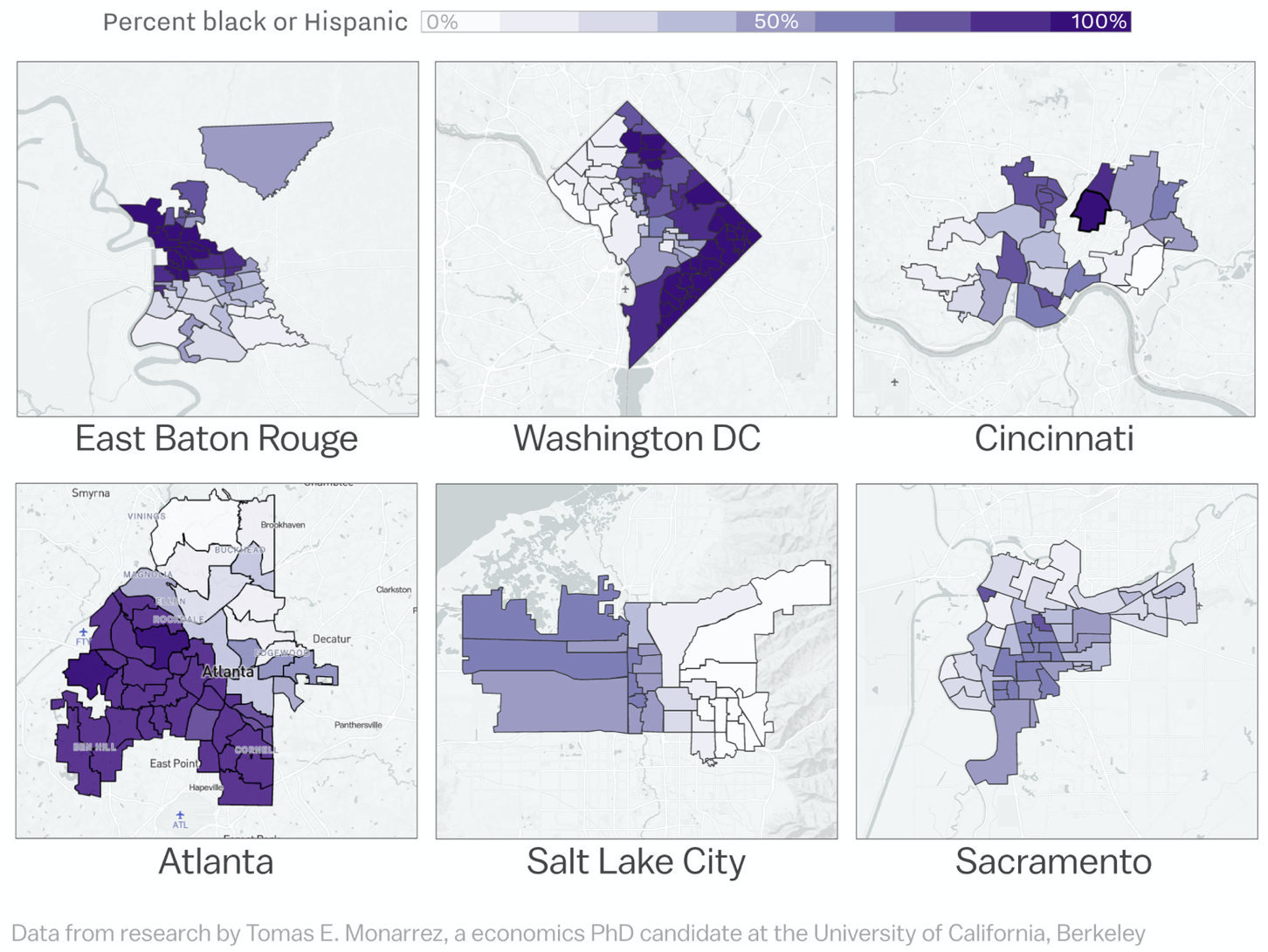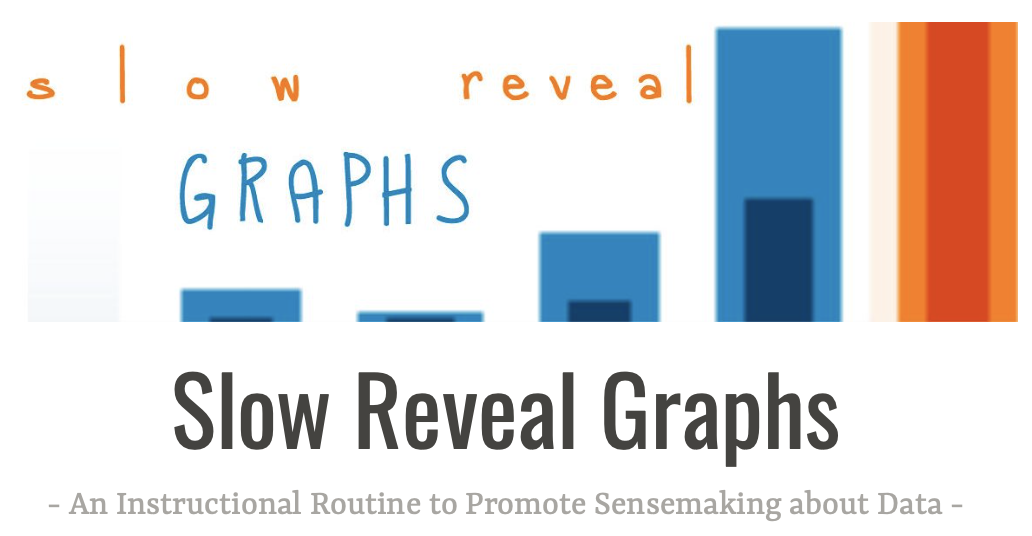|
|
|
|
Online Professional Development Sessions
|
|
|
No Session This Week.
Next Week, 12/1 at 9:00 PM ET.
Bringing the Math Back: Lessons in Educational Recovery from Around the World
We've been told repeatedly that we are teaching in unprecedented times, but in fact this is not the first round of education recovery post-natural disaster in modern times. We will look at lessons from around the world and how various nations reshaped their mathematics classrooms after interruptions due to disease, war, and weather-related phenomena. In these stories of resilience and innovation, we will imagine how our own classrooms may be reimagined in the wake of Covid-19.
Presented by: Brianna Kurtz
To register for this webinar, click here.
|
|
|
Check out past and upcoming Global Math Department webinars. Click here for the archives or get the webinars in podcast form!
You can also visit our new YouTube Channel to find videos of past sessions and related content.
|
|
|
Numbers and Sense
Last week in Washington, D.C., I overheard a conversation on the train between two strangers:
A: I just don't believe COVID is real.
B: But the news is reporting that cases in the U.S. are rising. How could you ignore that?
A: Where are the infected people? The news is just reporting numbers. Numbers aren't the facts! Numbers aren't the infection. The people have the infection! Show me the people!
I've been thinking about that conversation. I've been thinking about numbers and about how we process and react to them. I’ve been thinking about tweets like these:

And about podcast episodes like Dispatch 1: Numbers from Radiolab, which talks about the numbers connected to COVID.
With the pandemic came a national conversation largely spoken in the language of mathematics. Education scholar Bill Barton describes mathematics as any system for dealing with the quantitative, relational, and spatial aspects of human experience. How are people dealing with the quantities, relationships, and spatial life of COVID? What are people doing or not doing with this knowledge?
We teach students how to do all kinds of things to quantities, relationships, and space. They learn how to represent them as objects, cut these objects up and piece them back together, and reconfigure them into increasingly abstract forms. But often, quantities, relationships, and space are not abstract. They point to things that touch our lives such as whether COVID cases are low enough that schools can remain open or how district borders affect racial segregation in schools.

How often are teachers helping students process the quantities, relationships, and spaces in their lives? In a literature class, students talk about their personal reactions to a Toni Morrison novel. In an art class, students talk about the meanings and intentions behind their work. But in a traditional math class, it’s like students learn how to cook without ever being asked what they think about the food.
To be fair, not every mathematical concept needs to be tied to a “real-world” context. But numbers can matter, and numbers don’t speak for themselves. Numbers can make us feel. They can make us act. They can change how we see ourselves and one another. How this happens is not automatic. Like everything else, our relationship to numbers is a learned phenomena.
The Slow Reveal Graphs by Jenna Laib (@jennalaib) is one way we can promote quantitative and spatial literacy while also giving students space to talk about how certain numbers and graphs impact them and why. This instructional routine does a nice job promoting “number sense” by giving equal weight to “number” and “sense”. The slow reveal graphs take a rigorous approach to data analysis. But at the same time, there is nothing inherently objective about numbers. Numbers are always accompanied by a regime of perception that makes some things “make sense” and other things unrecognizable. For instance, consider how a “1% fatality rate” can make the world look a certain way depending on how you think about it while also hiding information about issues such as race and class. The slow reveal graph routine invites students to think deeply about this connection between numbers and perception.

Maybe the numbers aren’t the facts. But we can’t avoid our responsibility to engage with numbers and ask where they come from, how they make us feel, and when they lead us to act. Mathematical sense making is not a purely technical affair. Instead, it’s a practice also concerned with ethics and responsibility and a willingness to challenge what even constitutes “common sense”. This is the essence of mathematical sense making, which gives students the agency and hope to decide what is sensible beyond the boundaries of what society already tries to impose on them.
@melvinmperalta
|
|
|
Why Don't You Care?
Please answer this question for yourself.
This will be evaluated on the Final Examination.
@HKhodai
|
|
|
Learning to be a Teacher in a Pandemic
Virtual teaching is tough → biggest understatement of the year. But what about learning to be a teacher amidst a pandemic?
My name is Jess Moses, and I am a senior at Vanderbilt University, in the elementary education program. My teacher education has been upheaved by the pandemic. My student teaching placement got cancelled. In the semester where I expected to have the opportunity to teach more than I ever have, I haven’t worked with a single group of students., The secondary students in our program have been able to work with mentor teachers, so I was curious about what they are learning. I spoke with Maria Aguilera, also a senior at Vanderbilt, in the secondary education math program. We work together as research assistants on Project SIGMa (Supporting Instructional Growth in Mathematics), and we wanted to unpack some of her learnings from a semester in the online classroom. We sat down for a chat, and these are some of the key things we noticed.
Maria shared her experience applying her learning thus far about teaching in these unexpected times. Across our conversation, a theme emerged of pedagogical shift— transformation of all of her abstract knowledge about what an engaging, caring, conceptually-oriented mathematical classroom looks like.
Her first instinct when faced with the question of virtual teaching was to think about the different pedagogies she had been learning through her program and how to translate them exactly into virtual teaching. However, she soon realized that, instead of attempting to fit in-person teaching into this virtual space, she could embrace virtual teaching as something new. This was the first pedagogical shift. There would be some overlap, but this was an opportunity for all teachers, whether new or veteran, to be learners and collaboratively experiment with different pedagogies to discover what is effective, and when, in a virtual classroom.
So far this semester, Maria has felt supported by her professors, undergraduate cohort, and mentor teacher. Her mentor teacher has been a thought partner as they learn to navigate virtual learning together. Maria says that creativity is her strongest asset right now, as there is a lack of information about effective technologies and pedagogies for the virtual math classroom. With the resources that do exist, the overarching question about efficacy still applies: “effective for whom?” It can be easy to forget about all the non-content elements that make up teaching when you stare into a black screen every day talking to students’ floating profile pictures.
Building classroom community when you have never heard students’ voices or seen their faces requires another fundamental pedagogical shift regarding what community is and how it may be constructed. Maria has been thinking about the fact that her students still don’t know much about their classmates; some of them haven’t even seen their school yet or walked the hallways. She wonders what the impact of this is for the overall classroom community and what the transition to in-person teaching will mean for the community of learners. Will the students know their classmates? Will they want to engage in non-content related activities such as clubs or sports?
A third pedagogical shift is around our notion of student engagement, which is being pushed beyond previous conceptions and understandings. Previously, student engagement was often gauged through physical and verbal cues, which inform the teacher of a student’s understanding, or lack thereof. Maria expressed that, in her program, she had been taught to use these visual and behavioral cues for confirmation of student engagement. However, now, she’s had to think beyond what she can see to understand student engagement; a task that requires creativity and courage. To her, student engagement now looks like student responses in the chat or sharing random memes/gifs to convey how they are feeling. Student engagement can also mean logging into the school online portal or joining the class call at 7:05 a.m., when class starts.
Even though so much is uncertain, including when schools in Nashville will return to in-person teaching, there are many lessons that Maria, as a pre-service teacher, is learning from this experience. For example, she mentioned learning how to incorporate technology and using it fluidly during live class sessions. It has also been remarkable how students have adapted to the new technologies her mentor teacher introduced at the beginning of the year, such as Peardeck and Desmos, and how these specific technologies allow her to provide more students with immediate, intentional feedback to an extent that was impossible during in-person teaching.
She is hopeful that some of the things we are attending to now will continue to be foregrounded when we return to in-person teaching. Maria has noticed a higher emphasis on social emotional learning and is considering how best to bring this attentiveness back into her secondary math classroom, which can tend to be more content-focused. Maria and her mentor teacher begin classes with a daily check in where students pick a “would you rather” or drag an icon to an emoji to let them know how they are feeling at the start of class. These check-ins happen at the beginning and end of class, which is new. Maria and her mentor teacher ask students to give them a “temperature check” about their confidence about their understanding of a given topic. Our students are human beings first, and we are all given the opportunity to attend to this humanity, especially as we reflect on our own needs as humans.
Written by Maria Aguilera (@aguileramf) and Jess Moses (@Jess_Moses1)
|
|
|
The Global Math Department and researchers at North Carolina State University are undertaking a study to learn about teachers’ learning experiences from participation in the GMD. You can participate in this study if you have participated in the GMD as a presenter, attendee of a GMD conference, or reader of the GMD newsletter.
We invite you to click the link to join the study as a participant and to learn more!
Click Here to participate in this study
|
|
|
|
|
|
|